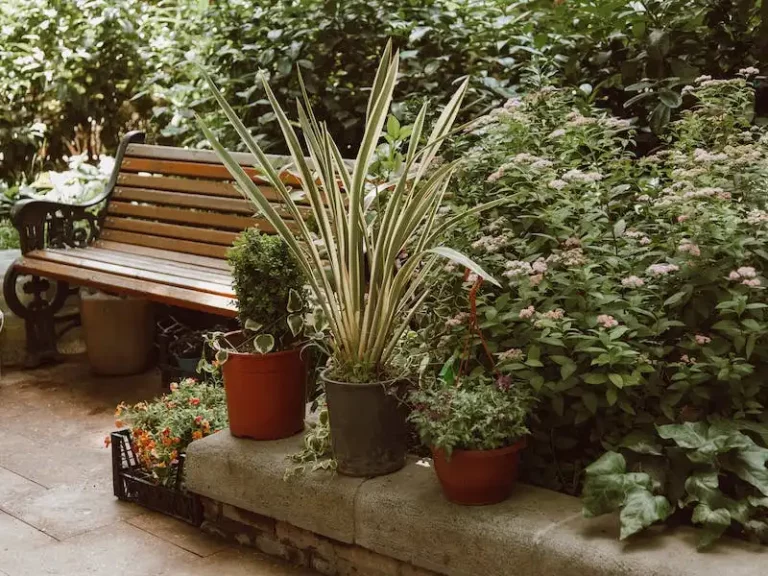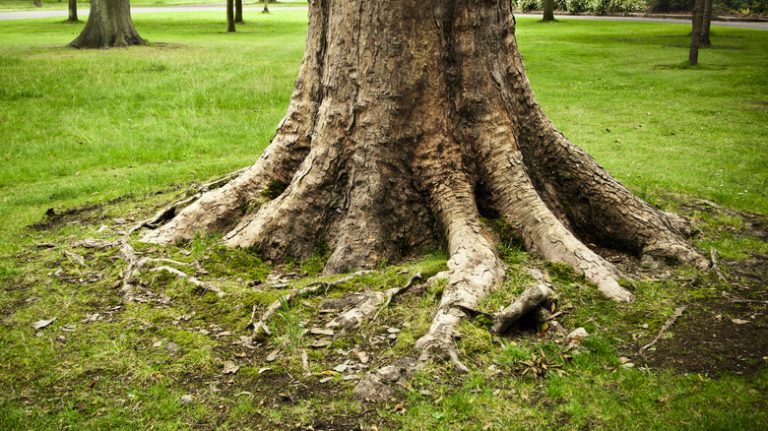Himalayan honeysuckle plants, also known as Leycesteria formosa, are a medium-sized shrub that originated from the Himalayas. These plants have a rich history and are well-known for their sweet and juicy berries, similar in appearance to cherries or small lanterns. The foliage of Himalayan honeysuckles is dark green and the flowers are quick to grow, with golden flowers appearing in the summer months.
If you’re a gardener looking to add some jealousy-inducing plants to your garden, Himalayan honeysuckle is an excellent choice. Not only are they visually striking, but they also provide a habitat for wildlife and can withstand heavy rain and frost. In fact, they are known for their hardiness and can grow in a wide range of areas, from poor soil to sandy soil.
If you’ve decided to grow Himalayan honeysuckle plants, there are several tips you should keep in mind. Firstly, you can purchase young seedlings or propagate them yourself through cuttings. If you choose to grow them from cuttings, make sure to select stems that are at least 6 inches long and have roots attached.
Once you have your plants or seedlings, it’s important to find the right spot for them in your garden. Himalayan honeysuckles prefer medium to full sun and well-drained soil. They can tolerate poor soil, but it’s always best to amend it with organic matter to improve the soil quality. Additionally, make sure to check the soil moisture regularly and water your plants if necessary, especially during dry periods.
When it comes to managing the growth of your Himalayan honeysuckle plants, pruning is necessary. Pruning should be done after the flowers have finished blooming, usually in late summer or early fall. You can also prune in the spring to shape the plant and remove any dead or damaged branches. Pruning will help maintain the shape of the shrub and promote new growth.
Lastly, if you’re growing Himalayan honeysuckles indoors, make sure to keep them in a cool and well-lit area. Provide them with enough water to keep the soil moist but avoid overwatering. Check for pests regularly and use organic insecticides if needed.
In conclusion, Himalayan honeysuckle plants are a beautiful addition to any garden. With their rich history, sweet berries, and striking foliage, these plants are sure to impress. By following the tips provided, you’ll be able to successfully grow and care for your Himalayan honeysuckles.
Leycesteria formosa
If you wish to add a unique and beautiful plant to your garden, consider growing Leycesteria formosa, also known as Himalayan honeysuckle. This medium-sized shrub is a member of the honeysuckle family and is grown for its attractive foliage and sweet berry-like flowers.
When selecting a plant, be sure to check for any reference to pests or disease. It’s best to choose a healthy plant that has been grown from a reputable source.
Leycesteria formosa is easy to grow and requires minimal maintenance. It prefers partial shade and well-draining soil. If you’re planting in a colder climate, you’ll want to protect the plant during the winter months.
In the spring, you can prune the plant to maintain its shape and encourage healthy growth. Pruning is not necessary, but if you wish to do so, make sure to prune after the plant has finished blooming.
Himalayan honeysuckles can be grown from seedlings or through transplanting. If you choose to grow from seedlings, start them indoors and then transplant them outdoors when the weather is more favorable. If you’re transplanting, make sure to keep the roots intact and plant at the same depth as they were originally.
These plants bloom in late summer and early autumn, producing clusters of small, bell-shaped flowers that are loved by hummingbirds. Once the flowers have bloomed, they will develop into golden berries that attract wildlife.
Leycesteria formosa has a rich history of uses. In addition to being an attractive addition to your garden, it has been used for its medicinal properties and has a variety of culinary uses. Its berries can be eaten fresh or used in preserves and desserts.
To grow Leycesteria formosa successfully, here are some tips to keep in mind:
- Provide partial shade and well-draining soil.
- Water regularly, keeping the soil moist but not waterlogged.
- Prune in the spring to maintain shape and encourage healthy growth.
- Protect the plant during the winter months in colder climates.
- Harvest the berries when ripe for culinary uses.
By following these tips and caring for your Leycesteria formosa plant, you can enjoy its beautiful flowers, sweet berries, and the wildlife it attracts to your garden.
Plant calendar
When it comes to growing Himalayan honeysuckles (known as Leycesteria formosa), here is a plant calendar to guide you through the seasons:
- Spring: This is the best time to start growing honeysuckles from seeds. You can begin sowing the seeds indoors in early spring, around 6 to 8 weeks before the last frost. Keep the seedlings indoors until the danger of frost has passed, and then transplant them into your garden.
- Summer: Honeysuckles grow best in rich, well-drained soil in partial to full sun. Make sure to water them regularly during dry spells to promote healthy growth. Provide a trellis or other support structure for the climbing varieties.
- Autumn: In late summer or early autumn, you can harvest the ripe berries from the Leycesteria formosa plants. These berries have a sweet taste and are similar to golden lanterns. They can be enjoyed fresh or used in jams, jellies, and desserts.
- Winter: Although the plant goes dormant in winter, managing its care is still important. Remember to prune the honeysuckle plants to remove any dead or damaged stems. This will encourage new growth in the spring.
By following this plant calendar, you can ensure that your Himalayan honeysuckles thrive and add beauty to your garden throughout the year. For more tips on growing these lovely plants, make sure to reference reliable sources and check with experienced gardeners in your area.
Source: [Insert source here]
Leycesteria and wildlife
Leycesteria, also known as Himalayan honeysuckle, is a versatile plant that not only adds beauty to your garden but also benefits wildlife. This deciduous shrub has hollow stems and roots that provide nesting sites for birds, making it a valuable addition to any garden.
If you’re interested in growing Leycesteria, you can find it at nurseries or online. Make sure to purchase plants that are well-rooted and free of pests. Leycesteria is hardy to frost and grows best in areas where there is partial shade. It prefers moist, well-draining soil and can tolerate poor soil conditions.
Once you have selected the perfect spot to plant your Leycesteria, prepare the area by loosening the soil and adding compost or sand, if necessary. Dig a hole that is slightly larger than the root ball, place the plant in the hole, and backfill with soil. Water the plant well after planting and regularly throughout the growing season.
Leycesteria produces clusters of flowers that resemble golden bells, which bloom from spring to summer. These flowers attract pollinators like bees and butterflies, as well as hummingbirds. After flowering, the plant forms clusters of dark purple berries, which are a favorite food source for birds. Birds will consume the berries as they ripen, so it’s important to check for ripe berries if you wish to collect them.
In addition to providing food for wildlife, Leycesteria also offers shelter. The hollow stems and roots make excellent nesting sites for birds, and the dense foliage provides cover for small mammals and insects. By planting Leycesteria in your garden, you can create a welcoming habitat for a variety of wildlife.
Fortunately, Leycesteria is a low-maintenance plant. It generally does not require pruning, but if necessary, you can trim back any dead or damaged stems in late winter or early spring. It is also relatively pest-resistant, making it an easy choice for gardeners.
Leycesteria has a long history in the Himalayas, where it is native. It has been cultivated for centuries for both its ornamental value and its usefulness in attracting wildlife. If you’re looking for a plant that is both beautiful and beneficial to wildlife, consider adding Leycesteria to your garden.
Himalayan Honeysuckle Plants Tips For Growing Himalayan Honeysuckles
For the gardeners who wish to add an attractive and low-maintenance plant to their gardens, Himalayan honeysuckles are a great choice. These plants offer several uses in the garden and require minimal care.
When you’re choosing a spot to plant your Himalayan honeysuckle, it’s best to select an area with well-drained soil. These plants can tolerate a wide range of soil types, but they don’t like heavy clay or poor drainage. If your soil is heavy clay, you may need to amend it with organic matter or choose another location.
You can purchase Himalayan honeysuckles in several forms, including bare roots, potted plants, or cuttings. Bare roots and cuttings are usually the easiest to find, and you can plant them straight into the ground or into containers. Potted plants can be transplanted at any time, but it’s best to wait until after the last frost for the best results.
Himalayan honeysuckle plants are known for their unique flowers and berries. The flowers are lantern-shaped and come in shades of dark purple or white. They bloom from early summer to late fall, attracting bees and other pollinators. The berries that follow are dark purple or black, and they are both edible and attractive to wildlife.
To keep your Himalayan honeysuckle plants looking their best, some light pruning may be necessary. Pruning can be done in late winter or early spring before new growth begins. It’s best to remove any dead or damaged stems as well as any crossing or crowded branches. By doing this, you’ll help promote healthy growth and maintain the plant’s shape.
Himalayan honeysuckles have a rich history and have been grown in gardens for centuries. They are native to the Himalayan region and are also known as Leycesteria formosa. These plants are fortunately available for gardeners today and can be a beautiful addition to any garden.
In conclusion, Himalayan honeysuckles are a versatile and easy-to-grow plant for any garden. Whether you’re looking for a low-maintenance shrub or a plant that attracts wildlife, these plants are a great choice. Remember to choose a well-drained spot for planting, and with minimal maintenance, you’ll enjoy the beautiful flowers and berries of these plants for years to come.



